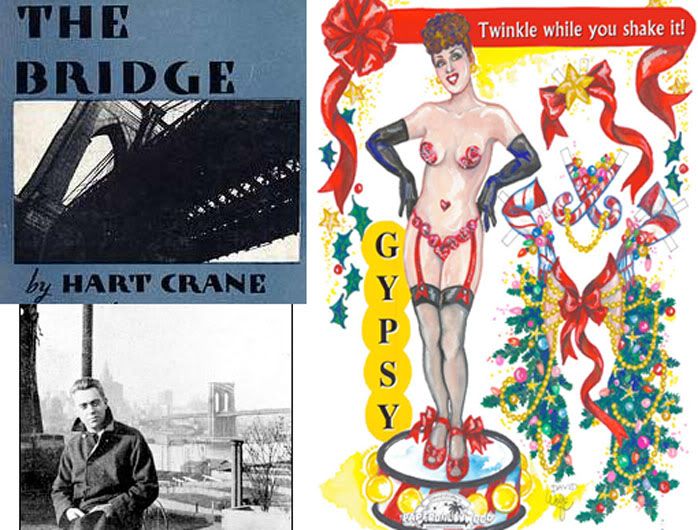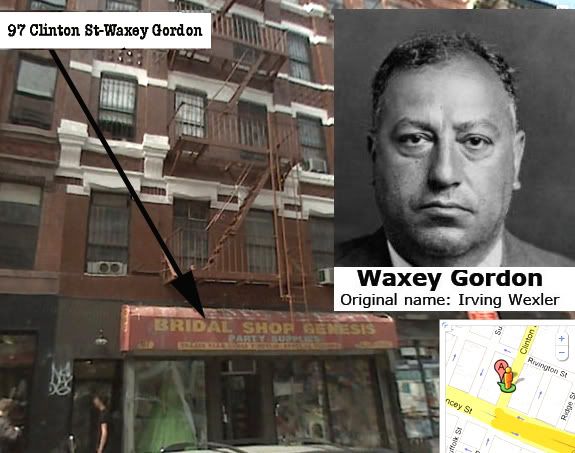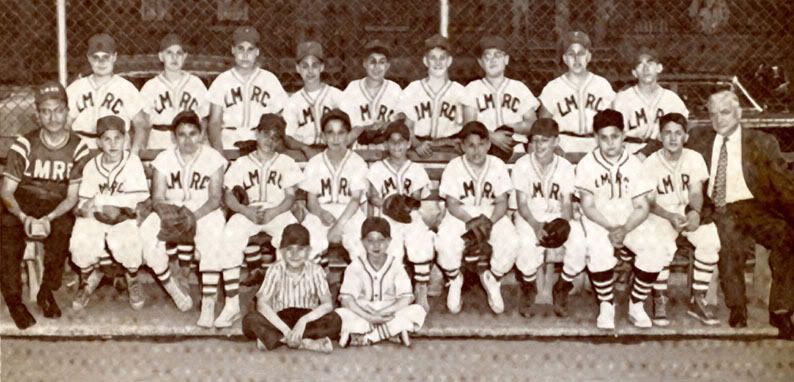The Bridge was inspired by New York City's "poetry landmark", the Brooklyn Bridge. Crane lived for some time at 110 Columbia Heights in Brooklyn, where he had an excellent view of the bridge; only after The Bridge was finished did Crane learn that one of its key builders, Washington Roebling, had once lived at the same address.
The Bridge comprises 15 short poems, here's one of them. It's inspiration was mentioned previously:
NATIONAL WINTER GARDEN.
by Hart Crane
Outspoken buttocks in pink beads
Invite the necessary cloudy clinch
Of bandy eyes. . . . No extra muffling here:
The world’s one flagrant, sweating cinch.
And while legs waken salads in the brain
You pick your blonde out neatly through the smoke.
Always you wait for someone else though, always–
(Then rush the nearest exit through the smoke).
Always and last, before the final ring
When all the fireworks blare, begins
A tom-tom scrimmage with a somewhere violin,
Some cheapest echo of them all–begins.
And shall we call her whiter than the snow?
Sprayed first with ruby, then with emerald sheen–
Least tearful and least glad (who knew her smile?)
A caught slide shows her sandstone grey between.
Her eyes exist in swivellings of her teats,
Pearls whip her hips, a drench of whirling strands.
Her silly snake rings begin to mount, surmount
Each other–turquoise fakes on tinselled hands.
We wait that writhing pool, her pearls collapsed,
–All but her belly buried in the floor;
And the lewd trounce of a final muted beat!
We flee her spasm through a fleshless door. . . .
Yet, to the empty trapeze of your flesh,
O Magdalene, each comes back to die alone.
Then you, the burlesque of our lust–and faith,
Lug us back lifeward–bone by infant bone
About Hart Crane
Hart Crane (1899-1932) was an American poet. Finding both inspiration and provocation in the poetry of T. S. Eliot (Crane’s The Bridge was allegedly written directly in response to Eliot’s The Wasteland), Crane wrote poetry that was traditional in form, difficult and often archaic in language, and which sought to express something more than the ironic despair that Crane found in Eliot’s poetry. Though frequently condemned as being difficult beyond comprehension, Crane has proved in the long run to be one of the most influential poets of his generation.
Crane was gay, and, much like his contemporaries (and a significant number of poets and artists throughout the ages), suffered from depression and a drinking problem. Although he experienced some success as a writer in the early and mid 1920′s, his depression and drinking won out, as did his belief that one could not be happy as a homosexual, and in 1932 he committed suicide by jumping off a steamship into the Gulf of Mexico.




























